How to Grow Spinach from Seed?
In most locations, spinach is a cool-season crop that grows well in the spring and fall. This crop is ideal for novice growers because it can be planted directly from the seed into the soil as soon as the land can be worked. The growing process is relatively similar to lettuce. The ideal strategy is to sow a limited number of seeds at a time and space out the plants because this vegetable develops swiftly.
As long as you give enough water, it is an excellent leafy green since it grows quickly, produces for a long time, and is not highly labor-intensive. Additionally, it thrives on raised beds, making it perfect for confined settings. It is the ideal plant for pots on decks, patios, balconies, and porches.
Besides the easy-to-grow option, it is exceptionally healthy. There are many types of research out there that demonstrates the health benefits of this vegetable. For example, it might lessen oxidative stress, enhance eye health, and aid in the prevention of cancer and heart disease. It is a simple food to incorporate into your diet if you’re interested in its potential to improve your health. Here are some of the health benefits of this magical vegetable:

- It has a lot of insoluble fiber. So your digestion may benefit from this kind of fiber.
- It is incredibly nutrient-dense. Carotenoids, vitamin C, vitamin K, folic acid, iron, and calcium are all present at significant levels.
- Numerous plant substances in this vegetable, including lutein, kaempferol, nitrates, quercetin, and zeaxanthin, can enhance health.
- There are several advantages of this vegetable. As well as lowering oxidative stress and promoting eye health, it may prevent cancer and control blood pressure.
- It may be best avoided by those who are prone to kidney stones. In addition, this leafy green’s high vitamin K content can be problematic for those using blood thinners.
It is a common crop that may be sown in very early spring, as well as in the fall and even winter in some regions. It is a very cold-hardy leafy green. So let’s learn more about cultivating nutrient-dense spinach in your backyard garden without further ado.
How Long Will It Take to Grow Spinach From Seed?
This vegetable may be grown anywhere from full sun to light shade; add compost to the soil approximately a week before planting. Alternately, prepare the ground in the late summer or early fall when it can be produced in areas with mild winters.
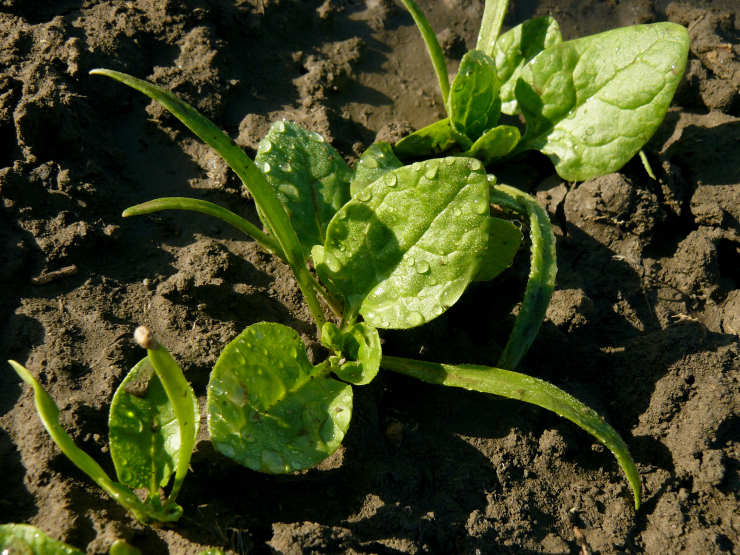
When the plant has at least 5 or 6 leaves 3 to 4 inches long, spinach leaves are ready to be harvested. Small leaves can be gathered by simply slicing them off at the stem. However, it is better to begin collecting the plant’s older, outside leaves and work your way toward the center. Keep the fresh inner leaves on the plant so they can develop further and be harvested later.
It’s crucial to maintain excellent growing conditions because if it’s too humid or hot, the plant will quickly start to produce tiny yellow or green blossoms. The plant’s flowering and bolting thicken the leaf, making its flavor bitter.
Therefore, harvesting the vegetable before it begins to flower is advisable for a more extraordinary taste. It would help if you sowed seeds directly into the soil as soon as the ground reaches 40°F since it needs six weeks of cool weather from seeding to harvest.
You might use black plastic to cover the soil to hasten to warm. Although it is possible to start seeds inside, it is rarely advised because seedlings are challenging to transplant. Instead, suppose it is planted just before the winter weather hits in the fall. In that case, gardeners in northern regions can harvest it in early April.
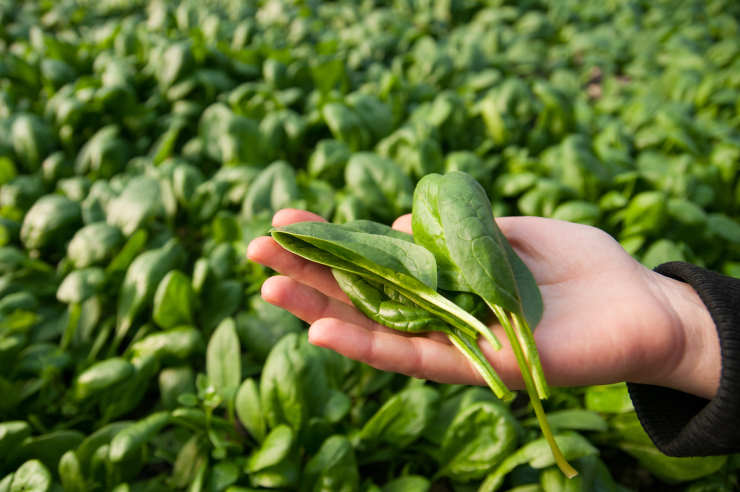
Through the winter, cover the young plants with a cold frame or a thick layer of mulch; in the spring, when the soil temperature reaches 40°F in your area, remove the protection. To pick some spinach, remove the mulch and put it back.
What Month Do You Plant Spinach?
The most astonishing thing about growing this vegetable indoors is that you may do so throughout the year. In addition, spinach plants do very well inside. Since spinach is a cool-season crop, ideal growing temperatures should range from 50 to 75 degrees Fahrenheit. Young spinach will bolt when exposed to temperatures below 40 degrees Fahrenheit.
However, mature plants can withstand lower temperatures, down to 20 degrees.
Generally speaking, a temperature range of 60 to 75 degrees Fahrenheit is ideal for growth. These are the common aspects to know if you wonder how to grow spinach from seed.
Depending on the variety of spinach you are growing, you should expose the plant to direct sunshine for at least 4 to 6 hours per day if you are growing it on a balcony or window sill.
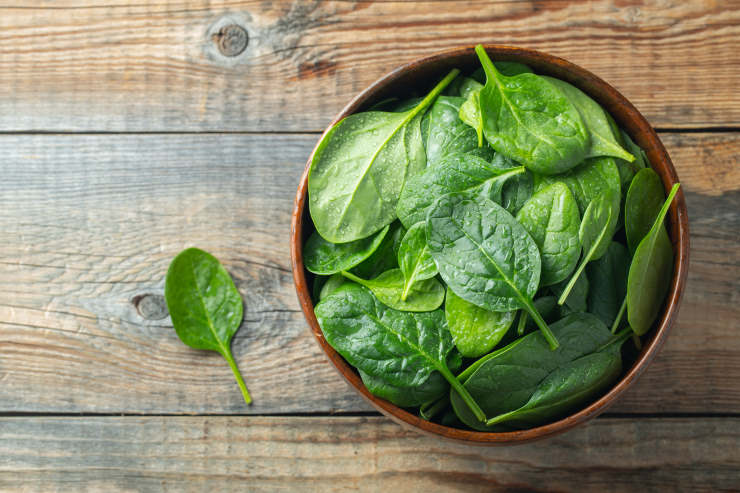
Although spinach grows best in bright sunlight, it can also be grown under some shade. Water, potting soil/potting mix, and seeds are all you’ll need. Additionally, a few tiny pots or containers are at least 6 to 12 inches deep.
Because growing it indoors in pots requires little maintenance, even those with little to no gardening knowledge can grow it indoors and reap its health advantages. Regularly give your plants the proper soil or potting mix, fertilizer, and water.
LED lights are ideal for growing indoors without access to sunshine. In their early stages, their seedlings need between 14 and 15 hours of sunlight daily, while mature spinach plants should receive between 8 and 10 hours.
Should Spinach Seeds Be Soaked Before Planting?
Besides the research on how to grow spinach from seed, this is a common question for growing various vegetables. For example, a seed might need to resist temperature extremes, an abundance of moisture or dryness, or even the stomach acid of a wild animal. Seeds have developed defenses over millions of years to withstand harsh circumstances. A seed is handled carefully in your modern garden, in contrast.

Many inexperienced gardeners are ignorant of the customary advice to soak seeds before planting. Soaking the seeds before planting can significantly reduce the time it takes for a seed to germinate. It is a crucial tip to be aware of if you want to understand how to produce it from seed.
Seeds that have been soaked before planting germinate more quickly by weakening the seed’s natural defenses against what it anticipates from outside influences.
Another aspect is that nature actively works against seeds by providing them with an internal clock that tells them when to grow. Most seeds heavily rely on moisture levels to tell them when to grow. By swiftly absorbing more moisture around the seeds, you may tell the seed that it is now secure to grow.
Also, some seeds include germination inhibitors intended to stop a seed from sprouting inside the fruit. A seed cannot germinate without the leaching of these inhibitors. This process can take some time in the natural world when it rains. So yes, you should soak the spinach seeds before planting.
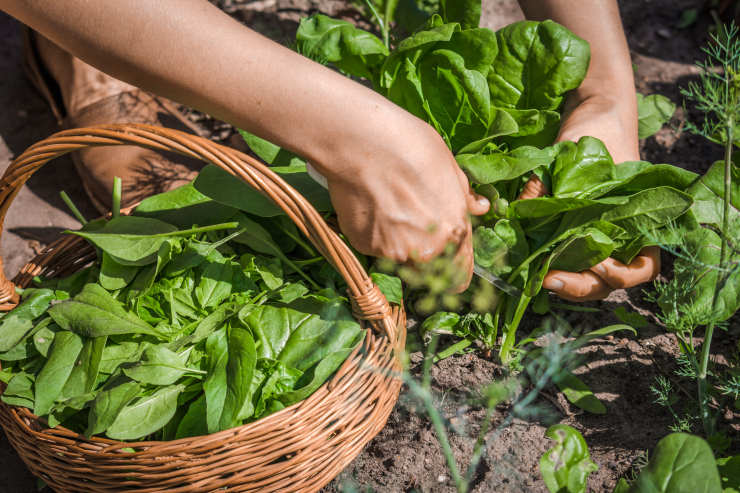
Can You Plant Spinach Seeds Directly?
There is nothing wrong with planting the spinach seeds directly without soaking. But if you carefully read why you should soak the seeds before planting, you might be leaning toward starting with the soaking process.
If you do not soak the seeds before planting, it will take a lot of time before your seeds start growing. In the spring, seedlings can also be acquired from a nursery for the least amount of effort and maximum convenience.
Direct sowing entails putting seeds right into the ground of your outdoor garden. Direct sowing is easier in moderate areas where late winter and early spring offer above-freezing temperatures and consistent precipitation.
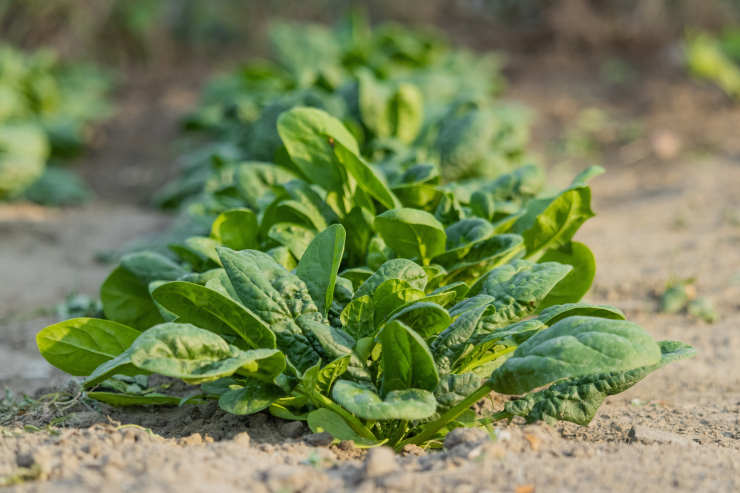
Small and more significant seeds can still be sown straight into the ground if you live in a less forgiving climate. Still, you must carefully time your planting to maximize the growing season. Most seed packets include detailed instructions on when to plant seeds. It will frequently occur eight to ten weeks before your area’s final frost.
Plant spinach seeds indoors in a sterile seed-starting mix about six weeks before the final anticipated frost date to give the plant a head start. Of course, there are some other ways. For example, you might handle the soaking process directly in your garden’s or pot’s soil.
If you want to apply a similar approach, we suggest you plant the seed, water the soil, and cover the top of your soil with some plastic sheet. This process will mimic the greenhouse effect, and your seeds will start growing quickly.
To the extent that many home gardeners choose to purchase young seedlings or small plants from a garden center rather than sow seeds themselves, sowing seeds needs careful planning, appropriate weather conditions, and close attention to detail. However, seed-starting may be an extremely gratifying activity with enough experience.
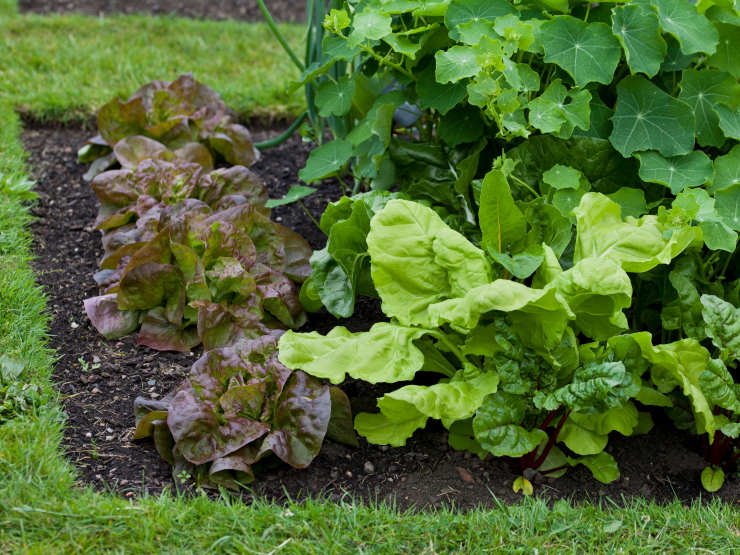
Final Tips on How to Grow Spinach from Seed
- The spinach plant grows quickly. Depending on the variety, spinach grows at different rates, but generally, it takes 6 to 8 weeks from planting to harvest.
- Spinach will resprout if you cut the plant with scissors or a knife at the base of the leaf. It will probably grow again for two or more harvests if the growth point is not harmed and the temperature is kept cold enough.
- Knowing which vegetables you can and cannot grow next to your spinach is essential if you consider extending your little indoor garden. Together with lettuce, peas, and radish, it will thrive in the garden. But avoid planting it between brassicas or potatoes.
- Avoid subjecting spinach to severe temperatures and give it regular waterings. Keep the soil moist but not soaking wet, and try not to dampen the foliage. To solve this issue, you must use pots with drainage holes.
- Growing spinach indoors doesn’t require any special maintenance; all it needs is frequent irrigation and fertilization to hasten growth.
- The finest fertilizers for producing spinach are those based on nitrogen. A balanced liquid fertilizer or even manure are other options. Compost, manure tea, or fish emulsion can all help your plant get the nutrients it needs to flourish. Remember that you should fertilize spinach after it has sprouted, not when it is nearly finished growing.
- Pests won’t be a significant concern because you’ll be growing spinach indoors. Nevertheless, watch for insects that feed on leaves, such as aphids and leaf miners. You can get around this issue by growing basil, chamomile, or dill next to or between your spinach. These are known to deter pests and treat the problem naturally, eliminating the need for chemical treatments.
- Even if you plant spinach in pots, you should still mulch because it will aid in moisture retention and boost soil richness. However, exercise caution as excessive mulching may bury and smother the plant.
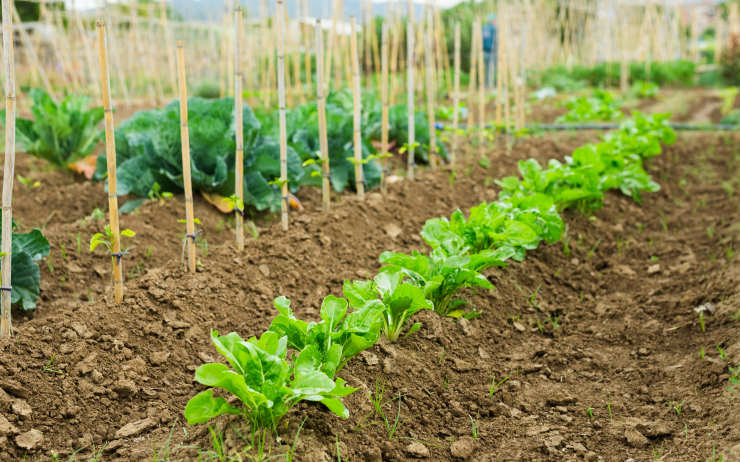
Conclusion
Overall, we have mentioned many aspects of how to grow spinach from seed in this article. It is tasty and full of nutrients that can help treat various illnesses and medical issues, such as reducing fatigue and enhancing cognitive abilities.
Additionally, it is abundant in vitamins C and E, as well as vitamins A, B1, B2, and B6, as well as various minerals like magnesium, sodium, and calcium. As a result, it improves your skin, hair, and nails, boosts your metabolism, boosts your immune system, removes constipation, and has many other health advantages.
It can be used and prepared in a variety of ways. Young, fresh leaves are typically used for salads, while more significantly, older leaves are typically cooked. Extra leaves can be blanched and stored to be used at a later time.
The best part is that you can produce this nutritious vegetable without a garden. It’s effortless to produce spinach indoors, and you don’t need to be an expert gardener to do it. It is a quickly expanding plant that can be utilized in various food preparation methods. The lush greens can be steamed and sautéed, or you can use young leaves to make a salad or a nutritious juice.
You may also be interested in:

